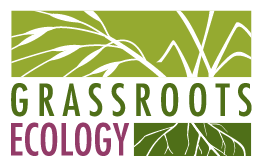
POLLUTION PREVENTION: ELEMENTARY SCHOOL
These lessons were created in partnership with the Regional Water Quality Control Plant
Introduction: Water in Our Environment
Grade: 2nd-5th
NGSS: ESS3.C - Human impacts on Earth systems
In this introductory reading on the water cycle, students learn the difference between the sewer system and storm drain system, and the relative scarcity of fresh water compared to the total amount of water on Earth.
Problem Plastics
Grade: 2nd
NGSS: ESS3.C - Human impacts on Earth systems
Students evaluate sets of everyday items, each made of different materials, and make a determination about which is “worst, better, or best” for the environment based on how fast the object can break down, what it is made from, and whether it can be reused. Students then record the plastic used at home for a day and brainstorm alternatives.
Bugs in Our Ecosystems
Grade: 2nd
NGSS: LS2.A - Interdependent relationships in ecosystems
Students will observe bugs in or around their homes, and play a matching game to learn about the beneficial roles bugs play in our ecosystems. They finish by creating their own bug.
Who Dirtied the Bay?
Grade: 3rd-5th
NGSS: ESS3.C - Human impacts on Earth systems
Students do a guided reading taking them back in time thousands of years to learn about how the Bay has changed over time, and how humans then and now continue to change this dynamic body of water. As they read, they will fill out questions and a timeline to help them understand the different historic events.
Mercury: Past and Present
Grade: 4th
NGSS: ESS3.A - Natural resources and renewability
This lesson will connect historic mercury pollution to another fourth grade topic, the California Gold Rush. Through a video and slide deck, students will learn about current sources of mercury and how it accumulates through the food chain. They will then apply what they learned to calculate and graph mercury levels in a sample food chain.
Watershed Warriors
Grade: 3rd-5th
NGSS: LS2.B - Cycles of matter and energy transfer in ecosystems
In this guided hands-on activity, students will use materials from home to create a simple watershed model. After modeling how water moves through a watershed and learning what kinds of pollutants it picks up along the way, students will work to create a solution to the pollution.






